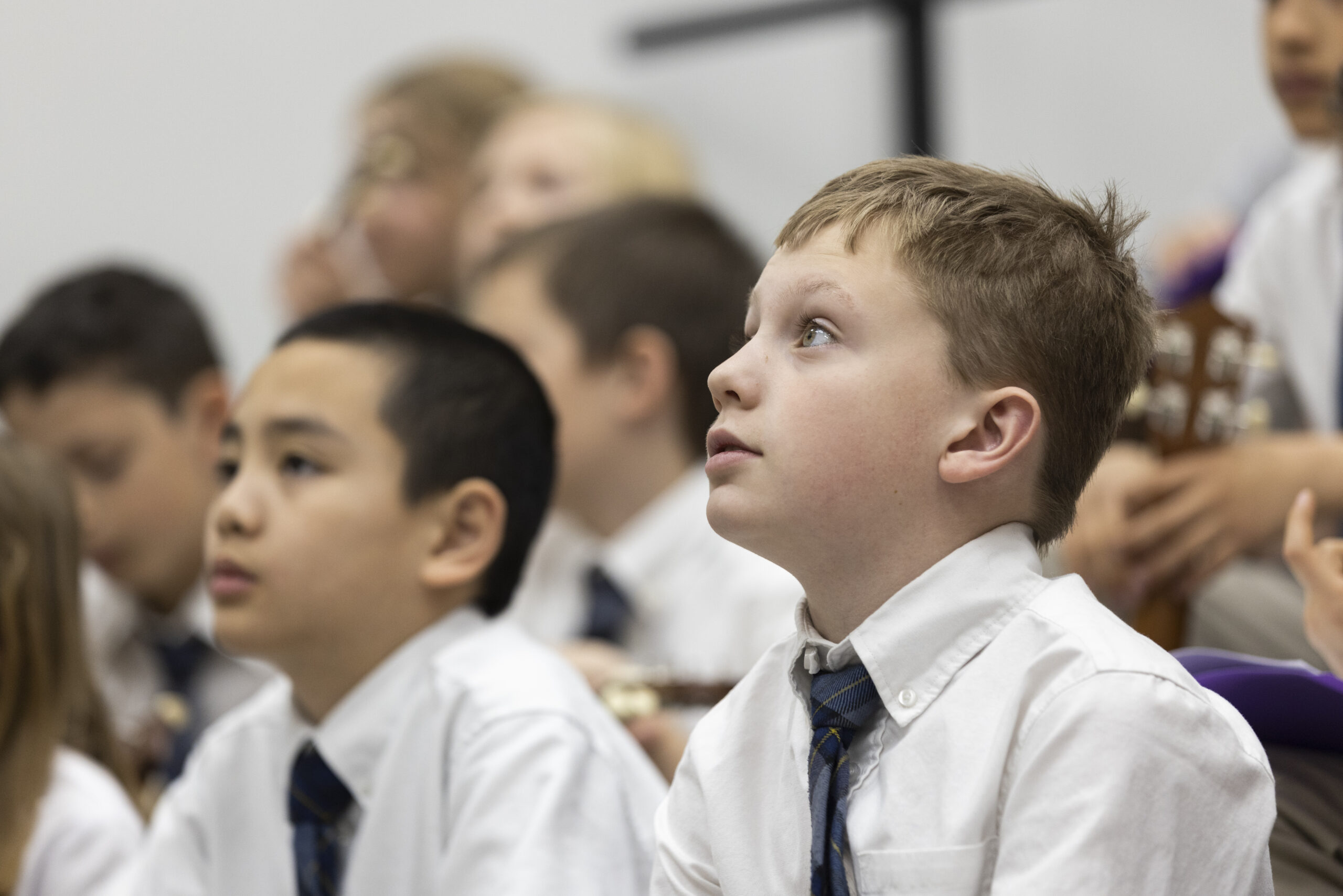It is often said that the arts are a means of sharing in the “human experience.” And while I probably heard that phrase a few too many times in my high school literature class not to hear it as cliché, there is a part of me that appreciates this time-honored saying.
Our curriculum places an important emphasis on cross-curricular connections — instances in which multiple subjects touch on the same general topic. In Second Grade, the students study Ancient China in History, Chinese folk tales in Literature, Chinese art history and architecture in Art, and Chinese folk instruments in Music. Of note is the fact that students learn more than a few facts about China; instead, they learn what it looked like, felt like, sounded like to live in that place at that time. One particular beauty of our curriculum is its ability to give a holistic view of the world and to exercise empathy in the hearts of our students.
Resonating Instruments
Today, we looked at the pipa, a Chinese instrument that has the appearance of the guitar, but is played primarily by plucking (rather than primarily by strumming) and is plucked by means of pointed rings (like guitar picks) worn on each finger of the player’s hand. This allows for the playing of fast, repetitive notes and development of musical ideas.
Several thousand years later, captured African tribes brought with them an instrument made from a gourd with a skin stretched over the top and a stick that braced a few strings. After developing in the Caribbean and the American South, this became known as the banio, and eventually, the banjo.
Thousands of years and miles separated the development of these two instruments, but they have surprisingly similar timbres (tone color)! It would seem that the love for this tone color is inherently appreciable, no matter where you come from! It can also be found in the Greek balalaika, and even the Russian balalaika! It must touch on something special in the human experience, that we share an affinity for this twangy sound.
Resonating Hearts
Today in Fourth Grade, I looked out into a class of teary-eyed 10-year-olds. No class-wide catastrophe has recently beset them. No depressing news made itself known. They had just finished singing:
By yon bonnie banks and by yon bonnie braes,
Where the sun shines bright on Loch Lomond;
Where me and my true love were ever wont to gae,
On the bonnie, bonnie banks of Loch Lomond.
Oh, ye’ll take the high road and I’ll take the low road,
And I’ll be in Scotland ‘afore ye,
But me and my true love will never meet again
On the bonnie, bonnie banks of Loch Lomond.
None of these students has ever been a Scottish soldier. None of them has ever been shot and lay dying on the battlefield. None of them has breathed their last and been flooded with visions of their beloved waiting endlessly on the shores of their hometown lake. None of them has had to murmur these visions to their friend who will return home (“take the high road”) while they are buried (“take the low road”) and gone (“be in Scotland ‘afore ye”).
Yet every one of them was moved.
Why did this song bring tears to their eyes? The answer is simple: everybody experiences love and loss. It doesn’t matter that this song sprang up halfway across the world, centuries ago. What matters is that we are able to empathize with others throughout the world and throughout history, or as I recently wrote elsewhere:
“Music making is the sharing of the human experience that music expresses. It is one of the few opportunities to join with others from various times and places in expressing a unified idea whilst also adopting it as your own expression.”
Our students have a unique opportunity to learn and grow and exercise empathy because of the unique design of our curriculum. If we don’t teach the whole student, we rob our children of moments like these, of becoming historical and world citizens.

